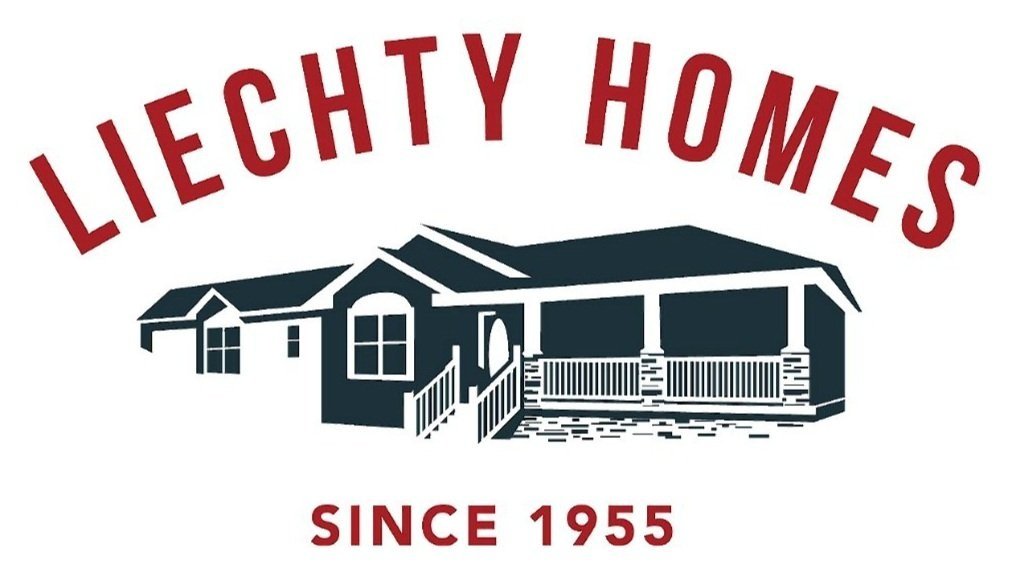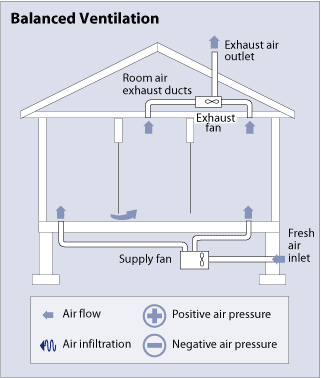Whole House Ventilation
In July 2023, Clayton Home Building Group, parent company of Schult Redwood Falls, launched the e-Built™ home, its most ambitious energy efficiency program to date. All homes built in the Redwood Falls facility are now e-Built™ homes, designed to maintain energy efficiency and save on heating and cooling costs while controlling air circulation to maintain a healthy indoor environment. To make this possible, Tom Hale, Clayton’s Director of Sales and Customer Experience explains: ”The e-Built™ home features a sealed duct system that contributes to your home’s energy efficiency by helping to keep it warm in the winter and cool in the summer. It also has a whole home ventilation system with exhaust fans to ensure fresh air cycles throughout the house.” So—what exactly does a whole house ventilation system do?
Seal tight, vent right
In a nutshell, a whole house ventilation system helps a well-sealed, energy efficient home to breathe. Improving energy efficiency requires builders to eliminate all of the small ways that air leaks into and out of a home, but without proper ventilation this also means that air will stagnate. Schult’s e-Built™ program includes whole house ventilation to solve that problem.
The National Renewable Energy Laboratory (NREL) notes that “Energy experts often quote the axiom, “seal tight, ventilate right” as their recommended approach to house ventilation. This axiom implies that houses should be tightly sealed to reduce infiltration, and a whole-house ventilation system installed to provide fresh air and remove pollutants when and where needed, in a controlled manner that does not negatively impact indoor air quality, building components, or heating and cooling bills.” The e-Built™ home uses an exhaust system to maintain healthy airflow in the home because it is uniquely suited to work well in colder climates like North and South Dakota, Minnesota, and the surrounding states.
How does an exhaust ventilation system work
How Whole House Ventilation Works For You
“Exhaust systems work by depressurizing the home,” according to energy.gov. “The system exhausts air from the house while makeup air infiltrates through leaks in the building shell and through intentional, passive vents…Typically, an exhaust ventilation system consists of a single fan connected to a centrally located, single exhaust point in the house.” In the e-Built™ home, the vents are located in either the utility room or hallway.
The e-Built™ home uses the Broan® LP510R Lo-Profile exhaust system, featuring selectable CFM of 50, 80, and 100. Pre-installed continuous run technology removes moisture and reduces risk of mold and mildew. It also meets AHSRAE 62.2 standards for ventilation and indoor air quality and is ENERGY STAR® certified.
Make it stand out
Whatever it is, the way you tell your story online can make all the difference.
An added benefit…cleaner air and less humidity
Ventilation systems also improve air quality and help control humidity in the home, which prevents mold from growing. They circulate air which reduces allergens by filtering them out through the furnace and central air systems. To maximize the benefits of the whole house ventilation system, Corey Theis, CSM at Schult Redwood Falls says, “We suggest homeowners run the ventilation system continuously for about two months after construction. After that you can turn it on whenever you feel it’s needed.” It’s literally as easy as flipping a switch.
Lance Kennedy, sales Associate at Liechty Homes Jamestown, notes that beyond the initial continuous two month run that is recommended after the home is set, “You can turn that fan on anytime you think the air is stagnant. It’s like when you burn something on the stove and you turn on the fan in your microwave to get rid of the smell. This system does that for your whole house.”
Ventilation systems can also preserve the longevity of your home, as excess moisture can cause damage to windows, walls, flooring, and insulation. “We like humidity,” Kennedy says, “but building materials don’t!” He recalls a time prior to working with Liechty Homes when he was called to a site where the homeowner had improperly set their own manufactured home on a basement foundation. “They had no ventilation for their basement and the basement released a lot of excess humidity,” he says. “It was a two year old house that had windows that were bowed out and they were constantly wiping water off of them. If they had had this kind of ventilation system, they probably could have dealt with that excess humidity.”
Each Liechty Homes location carries e-Built™ homes with whole house ventilation systems. Contact or visit a sales center near you to learn more.



